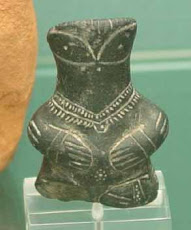Indystar.com: Genius at work: 12-year-old is studying at IUPUI.
When Jacob Barnett first learned about the Schrödinger equation for quantum mechanics, he could hardly contain himself.Yahoo News: For 12-year old astrophysics prodigy, the sky’s the limit.
For three straight days, his little brain buzzed with mathematical functions.
From within his 12-year-old, mildly autistic mind, there gradually flowed long strings of pluses, minuses, funky letters and upside-down triangles -- a tapestry of complicated symbols that few can understand.
He grabbed his pencil and filled every sheet of paper before grabbing a marker and filling up a dry erase board that hangs in his bedroom. With a single-minded obsession, he kept on, eventually marking up every window in the home.
Strange, say some.
Genius, say others.
But entirely normal for Jacob, a child prodigy who used to crunch his cereal while calculating the volume of the cereal box in his head.
"Whenever I try talking about math with anyone in my family," he said, "they just stare blankly."
So do many of his older classmates at Indiana University-Purdue University Indianapolis, who marvel at seeing this scrawny little kid in the front row of the calculus-based physics class he has been taking this semester.
"When I first walked in and saw him, I thought, 'Oh my God, I'm going to school with Doogie Howser,' " said Wanda Anderson, a biochemistry major, referring to a television show that featured a 16-year-old boy-genius physician.
Elementary school couldn't keep Jacob interested. And courses at IUPUI have only served to awaken a sleeping giant.
Just a few weeks shy of his 13th birthday, Jake, as he's often called, is starting to move beyond the level of what his professors can teach.
In fact, his work is so strong and his ideas so original that he's being courted by a top-notch East Coast research center. IUPUI is interested in him moving from the classroom into a funded researcher's position.
"We have told him that after this semester . . . enough of the book work. You are here to do some science," said IUPUI physics Professor John Ross, who vows to help find some grant funding to support Jake and his work.
"If we can get all of those creative juices in a certain direction, we might be able to see some really amazing stuff down the road."
"My fear was that he would never be in our world"
Teenage college student?
Developer of his own original theory on quantum physics?
Paid researcher at 13?
This is not what Jake's parents expected from a child whose first few years were spent in silence.
"Oh my gosh, when he was 2, my fear was that he would never be in our world at all," said Kristine Barnett, 36, Jake's mother.
"He would not talk to anyone. He would not even look at us."
Child psychologists assessed Jake at the time and diagnosed behavioral characteristics of a borderline autistic child. He was impaired, they said, and had a lack of "spontaneous seeking to share enjoyment," difficulty showing emotion and interacting with others.
Diagnosis: mildly autistic.
"My biggest fear," his mom said last week, with tears welling up in her eyes, "was that he had lost the ability to say, 'I love you' to us."
By age 3, Jake was the focus of a more intense evaluation from a team of psychologists, therapists and a diagnostic teacher.
Their report indicated that while Jake continued to struggle with social activities and physical development, he was showing signs of academic skills that were above his age level.
Diagnosis: Asperger's syndrome, a somewhat milder condition related to autism.
After hearing this, Jake's parents decided to pay closer attention to the things their first-born son was doing -- rather than the things he was not.
For example, Jake often recited the alphabet -- forward and then backward. He used Q-tips to create vivid geometrical shapes on the living room floor. He solved 5,000-piece puzzles (rather quickly). And he once soaked in a state road map and ended up memorizing every highway and license plate prefix.
And perhaps most amazingly, he could recite the mathematical constant pi out to 70 digits.
"I'm at 98 now," Jake said, interrupting his mom during an interview.
And then, a week later, he was up to 200 digits after the decimal point -- forward and backward.
At 3, his head was in the stars
The Barnetts decided it was time to follow Jake's lead, adopting a method that some parents of children with autism use -- floor-time therapy -- to help foster developmental growth. They let their children focus intently on subjects they like, rather than trying to conform them to "normal" things.
For Jake, that meant astronomy. As a 3-year-old, he loved looking at a book about stars, over and over again.
So off they went on a tour of the Holcomb Observatory and Planetarium at Butler University.
Kristine Barnett will never forget the day.
"We were in the crowd, just sitting, listening to this guy ask the crowd if anyone knew why the moons going around Mars were potato-shaped and not round," she recalls. "Jacob raised his hand and said, 'Excuse me, but what are the sizes of the moons around Mars?' "
The lecturer answered, and "Jacob looked at him and said the gravity of the planet . . . is so large that (the moon's) gravity would not be able to pull it into a round shape."
Silence.
"That entire building . . . everyone was just looking at him, like, 'Who is this 3-year-old?' "
After that, the Barnetts began to feed Jake's hunger for knowledge, through more books and more visits to the planetarium. By the time he was 8, he got permission to sit in on an advanced astronomy class at IUPUI.
Meanwhile, his math skills were reaching astronomical levels.
By the time he was in fifth grade, Jake had become bored with elementary math. He was a student, first at Carey Ridge Elementary School and then at Westfield Intermediate School, an experience he now says he enjoyed for a while.
"The first couple of years were great, but then eventually the math started being, like, OK, we've been discussing this for a while, and it really isn't that hard," Jake said. "Can I move on to calculus now? Can I move on to algebra now?"
The boredom did not go unnoticed at home. Jake was coming home from school quiet, huddling in a safe space in the house and starting to show signs of withdrawing.
"I was really afraid we were going to lose him back into the world he was in when he was 2," his mom said.
Frank Lawlis, a Texas-based psychologist who serves as a testing supervisor for the American Mensa organization -- a society for geniuses -- said it would not have been unusual for a child with symptoms of autism to regress backward after a brief time of growth.
"One of the aspects of autism is that these kids' brains grow at an accelerated rate and then, generally speaking, there is kind of a reversal that happens," said Lawlis, who last year wrote "The Autism Answer," a book for parents of children with autism.
"The theory is that the brain reaches a certain capacity, can't grow, becomes inflamed, and then a reversal effect occurs. It's just a theory, but it's very common."
That did not happen to Jake, thanks in part to a third psychological evaluation done nearly two years ago. It showed that this fifth-grader was not regressing but was simply bored and needed to be stimulated -- in a very big way.
As in dropping out of school.
"Indeed, it would not be in Jacob's best interest to force him to complete academic work that he has already mastered," clinical neurophysiologist Carl S. Hale, Merrillville, said in a report provided by the Barnetts.
"He needs work at an instructional level, which currently is a post college graduate level in mathematics, i.e., a post master's degree. In essence, his math skills are at the level found in someone who is working on a doctorate in math, physics, astronomy and astrophysics."
The Barnetts were blown away. They knew Jake was smart, but doctorate-level smart?
"I flunked math," Kristine said with a laugh. "I know this did not come from me."
Off to college, where he tutors classmates
Encouraged by this new assessment, the Barnetts made the tough decision to pull Jake out of Westfield Washington Schools and enroll him in IUPUI's early college entrance program that caters to gifted and talented kids -- although typically they are advanced high school students, not 12-year-old whiz kids.
As he prepared for the more rigorous work of a college class, Jake decided he ought to make sure he could master all high school-level math that would be required in college.
"In one two-week period, he sat on our front porch and learned all of his high school math," Kristine said. "He tested out of algebra 1 and 2, geometry, trigonometry and calculus."
At this point, Jake's math IQ -- which has been measured at 170 (top of the Wechsler Intelligence Scale for Children) -- could not get any higher.
"You could tell right off the bat, his performance has been outstanding," said Ross, who, at age 46 with a Ph.D. from Boston University, has never seen a kid as smart as Jake.
"When he asks a question, he is always two steps ahead of the lecture," Ross said. "Everyone in the class gets quiet. Poor kid. . . . He sits right in the front row, and they all just look at him.
"He will come to see me during office hours and ask even more detailed questions. And you can tell he's been thinking these things through."
Jake is driven by Mom or Dad from his home in Hamilton County to IUPUI's campus, where he attends classes a few days each week. In between classes, he spends time at the Honors College lounge, where he has become a go-to guy for much older classmates needing tutoring.
"A lot of people come to him for help when they don't understand a physics problem," said Anderson, his class partner. "People come up to him all the time and say, 'Hey Jake, can you help me?' "
"A lot of people think a genius is hard to talk to, but Jake explains things that would still be over their head."
His professor has noticed.
"Is he a genius? Well, yeah," Ross said. "Kids his age would normally have problems adding fractions, and he is helping out some of his fellow students."
If Jake stays on track, Ross could see him working someday at a government lab or an observatory. Maybe he'll be a professor or a highly respected researcher.
"He can do anything he wants."
A normal boy, except for the numbers
Despite this new experience, his parents insist that Jake remain close with his friends in Westfield. Social activity is important, they know.
For Jake, life is not all centered on math and astrophysics.
He also likes playing video games. ("Guitar Hero" and "Halo: Reach" are his current favorites.) He plays basketball with friends, has a girlfriend and recently attended his first dance.
He likes music -- classical, which he plays by memory on a piano, but he also plays some contemporary songs he hears on the radio. He loves sci-fi movies and the Disney Channel. He watches documentaries on the History Channel.
A normal kid.
But then, late at night, when the TV is off, the homework is done and everyone in the house is sleeping, the numbers start to percolate again.
They percolate so much that he has trouble sleeping. His parents got so worried a few years ago that they took him for medical tests, but no malady was diagnosed. He just can't fall asleep easily.
"A lot keeps me awake," Jake said. "I scare people."
The numbers that keep him from snoozing are the same that led him to develop his own theory of physics -- an original work that proposed a "new expanded theory of relativity" and takes what Einstein developed even further.
His mom, still not sure whether her son was truly a genius at work or a kid at play, decided to send a video of Jake explaining his theory to the prestigious Institute for Advanced Study near Princeton University, one of the world's leading centers for theoretical research and intellectual inquiry.
That's where astrophysics Professor Scott Tremaine does his work. Tremaine is one of the world's leading scientists and is an expert in the evolution of planetary systems, comets, black holes, galaxies -- all the stuff Jake really likes.
In a letter to the Barnetts, Tremaine confirmed the brilliance.
"I'm impressed by his interest in physics and the amount that he has learned so far," Tremaine wrote in an email, provided by the family. "The theory that he's working on involves several of the toughest problems in astrophysics and theoretical physics.
"Anyone who solves these will be in line for a Nobel Prize."
He then encouraged Jake to spend as much time as possible to learn more and to further develop his theory.
Contacted by The Indianapolis Star, Tremaine confirmed the exchange of notes.
"I have seen a YouTube video in which Jake describes his theory, and I have spoken with his mother and corresponded with both her and Jake by email," Tremaine said. "I hope that Jake continues his interest in physics and mathematics."
Thinking big is what he does
Meanwhile, Jake is moving on to his next challenge: proving that the big-bang theory, the event some think led to the formation of the universe, is, well, wrong.
Wrong?
He explains.
"There are two different types of when stars end. When the little stars die, it's just like a small poof. They just turn into a planetary nebula. But the big ones, above 1.4 solar masses, blow up in one giant explosion, a supernova," Jake said. "What it does, is, in larger stars there is a larger mass, and it can fuse higher elements because it's more dense."
OK . . . trying to follow you.
"So you get all the elements, all the different materials, from those bigger stars. The little stars, they just make hydrogen and helium, and when they blow up, all the carbon that remains in them is just in the white dwarf; it never really comes off.
"So, um, in the big-bang theory, what they do is, there is this big explosion and there is all this temperature going off and the temperature decreases really rapidly because it's really big. The other day I calculated, they have this period where they suppose the hydrogen and helium were created, and, um, I don't care about the hydrogen and helium, but I thought, wouldn't there have to be some sort of carbon?"
He could go on and on.
And he did.
"Otherwise, the carbon would have to be coming out of the stars and hence the Earth, made mostly of carbon, we wouldn't be here. So I calculated, the time it would take to create 2 percent of the carbon in the universe, it would actually have to be several micro-seconds. Or a couple of nano-seconds, or something like that. An extremely small period of time. Like faster than a snap. That isn't gonna happen."
"Because of that," he continued, "that means that the world would have never been created because none of the carbon would have been given 7 billion years to fuse together. We'd have to be 21 billion years old . . . and that would just screw everything up."
So, we had to ask.
If not the big bang, then how did the universe come about?
"I'm still working on that," he said. "I have an idea, but . . . I'm still working out the details."
In some ways, Jacob Barnett is just like any other 12-year-old kid. He plays Guitar Hero, shoots hoops with his friends, and has a platonic girlfriend.
But in other ways, he's a little different. Jake, who has an IQ of 170, began solving 5,000-piece jigsaw puzzles at the age of 3, not long after he'd been diagnosed with Asperger's syndrome, a mild form of autism. A few years later, he taught himself calculus, algebra, and geometry in two weeks. By 8, he had left high school, and is currently taking college-level advanced astrophysics classes—while tutoring his older classmates. And he's being recruited for a paid researcher job by Indiana University.
Now, he's at work on a theory that challenges the Big Bang—the prevailing explanation among scientists for how the universe came about. It's not clear how developed it is, but experts say he's asking the right questions.
"The theory that he's working on involves several of the toughest problems in astrophysics and theoretical physics," Scott Tremaine of Princeton University's Institute for Advanced Studies—where Einstein (pictured) himself worked—wrote in an email to Jake's family. "Anyone who solves these will be in line for a Nobel Prize."































